The pandemic has highlighted how important green spaces are in providing opportunities for Torontonians to connect with nature and each other. Parks are our most common green spaces, but public laneways also provide a hidden opportunity to introduce nature and community space near where we live, work and play.
Laneway Park-ing is an annual initiative of TLP “parkifying” Toronto’s laneways, conceived as a COVID-19 recovery program to help address geographic inequities in parkland provision and distribution.
Parks are an essential component of healthy and resilient communities: They provide places for people to connect with each other and nature and provide invaluable ecosystem services which support the social, cultural, environmental, physical, and economic health of a city. There is growing public recognition of the importance of adequate parkland provision.
The pandemic has pushed public life outside to an unprecedented degree. Parks have become the primary venue for socialization, yet there are simply not enough to meet the surge in demand in the urban core – demonstrated most succinctly in the infamous images of “COVIDiots” overcrowding Trinity Bellwoods in Summer 2020. While Toronto recognizes the value of parkland with a 28m2/person target, actual provision rates in Downtown and Midtown neighbourhoods fall between 0-12m2/person. As Canada’s largest and fastest-growing city, development pressures make it impossible for the municipality to compete on the open market for what little available land there is to create new parks: In Downtown the parkland acquisition budget amounts to the area of less than two regulation soccer fields. Due to budgetary and land constraints, adequate parkland cannot be acquired to meet current and anticipated population demands: By 2033 citywide per capita parkland provision rates will drop by 14% - and fall by 25% in the quickly intensifying urban core. New innovative and scalable solutions need to address parkland need.
Toronto has a network of over 2,400 public laneways covering an estimated 300 acres, concentrated in Downtown and Midtown neighbourhoods, which are underutilized as community assets. Laneways are currently treated as utilitarian spaces, designed to simply provide local service access to private property. The capital cost, to the city, of maintaining laneways over the next ten years is nearly $20M or 9% of the parkland acquisition budget for the same period, but laneways do not convey nearly a 10th of the same broad community benefits as parks (and are actively detrimental to the environment, due to the level of impermeable surfaces and lack vegetation)! However, laneways have great potential to serve their communities as new, alternative urban green spaces through cost-effective interventions such as green infrastructure, public art, pedestrian lighting, street furniture, and traffic-calming measures. TLP has adapted our proven community-led, process and outcome-oriented placemaking approach for Laneway Park-ing to harness this potential and create new alternative urban green spaces that meet the unique needs and aspirations of project host communities.
Over the next three years Laneway Park-ing will be brought to nine new communities across Toronto.
LANEWAY PARK-ING 2022
In the second annual instalment of Laneway Park-ing, we will “parkifying” laneways in three new communities across Toronto to create locally-responsive alternative urban green spaces.
PROJECT PAGES
NEIGHBOURHOODS
Bloordale / Wallace-Emerson | Regal Heights
FUNDERS
TBD
LOCAL PARTNERS
Cosmos Nature Lane Residents’ Association | Regal Heights Residents’ Association
PILOT YEAR (2020-21)
During the pilot year of Laneway Park-ing, this initiative was brought to two neighbourhoods to transform their laneways into alternative urban green spaces that addressed the unique opportunities and challenges the communities faced. The projects were sited in an unnamed lane running south of Queen St E, from Logan Ave to Morse St, in Leslieville and Central Hospital Lane in the Moss Park-Cabbagetown area. These transformations applied the key elements of a complete, vibrant public space (greening, public art, pedestrian lighting, street furniture, and traffic-calming measures) in novel ways to achieve two Toronto “firsts”: a full-coverage, traffic-calming road mural and an Indigenous Healing Corridor. Read below and visit the individual project pages to learn more.
NEIGHBOURHOODS
Moss Park-Cabbagetown | Leslieville
FUNDERS
ArtworxTO (Leader) | TD (Builder) | Toronto Arts Council (Builder) | Jesin-Neuberger Charitable Foundation (Builder) | GrandTrees (Supporter) | Rust-oleum (Supporter) | Not Far From the Tree (Supporter)
LOCAL PARTNERS
St. Luke's Church | Dixon Hall | The Rekai Centres | Garden View Apartments | Toronto Community Housing (320 Seaton St) | Moss Park-Cabbagetown residents | Morse St Junior Public School parents | Leslieville residents
BEFORE

![DSC_1210[1]_Leslieville Park-ing.jpg](https://images.squarespace-cdn.com/content/v1/5420dd38e4b0968055cfdb19/1623277203472-OR2GPJU69W5AM9GRRLV6/DSC_1210%5B1%5D_Leslieville+Park-ing.jpg)
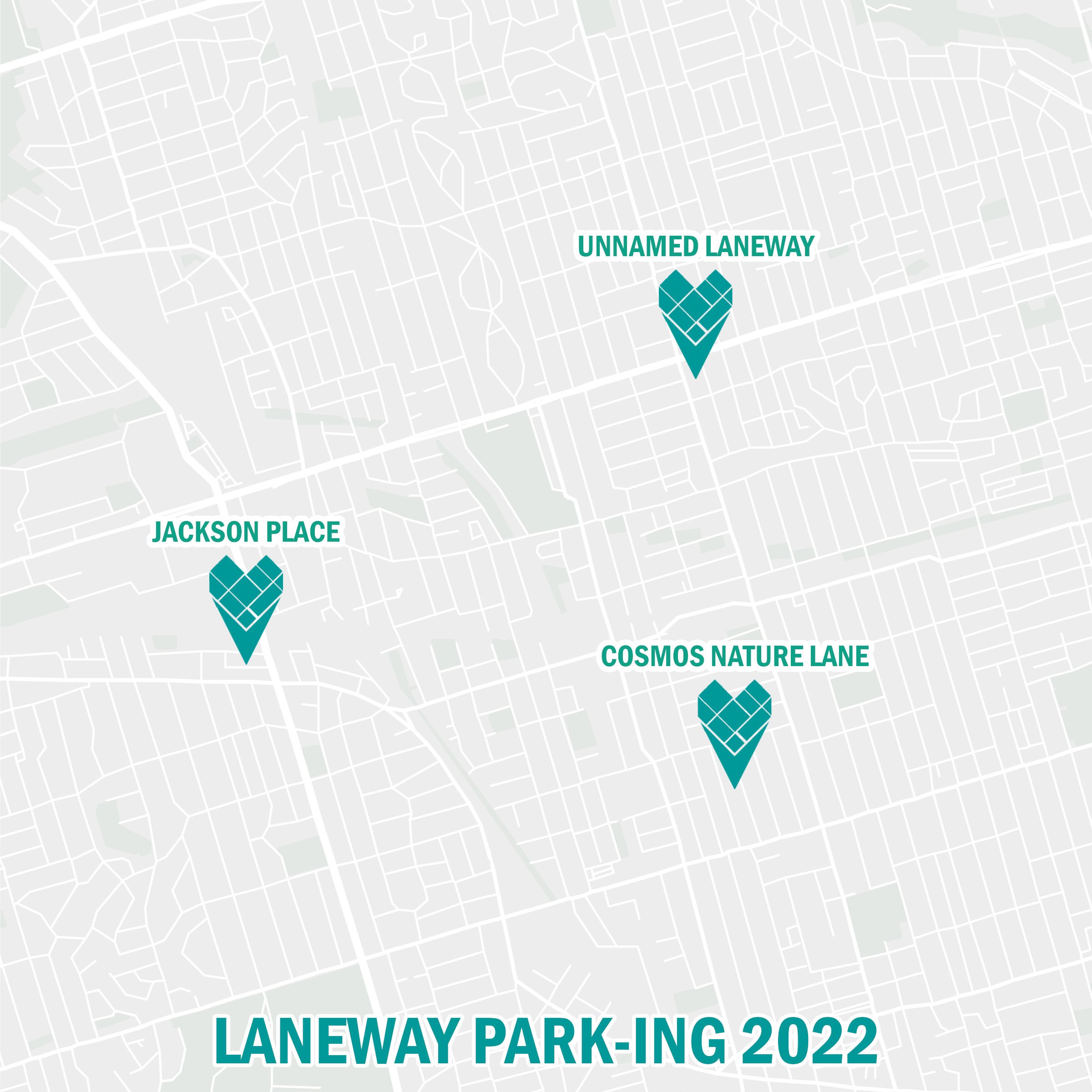
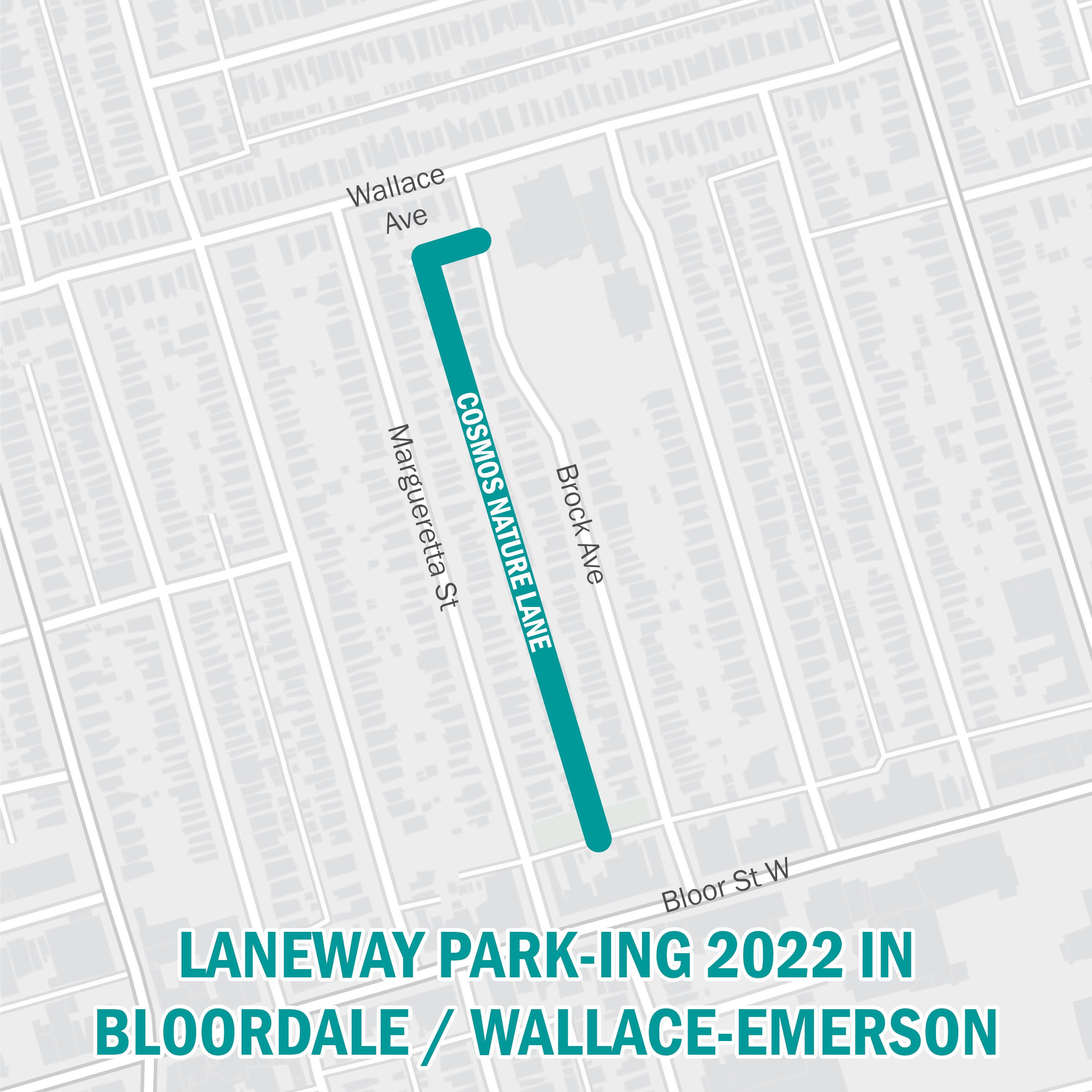
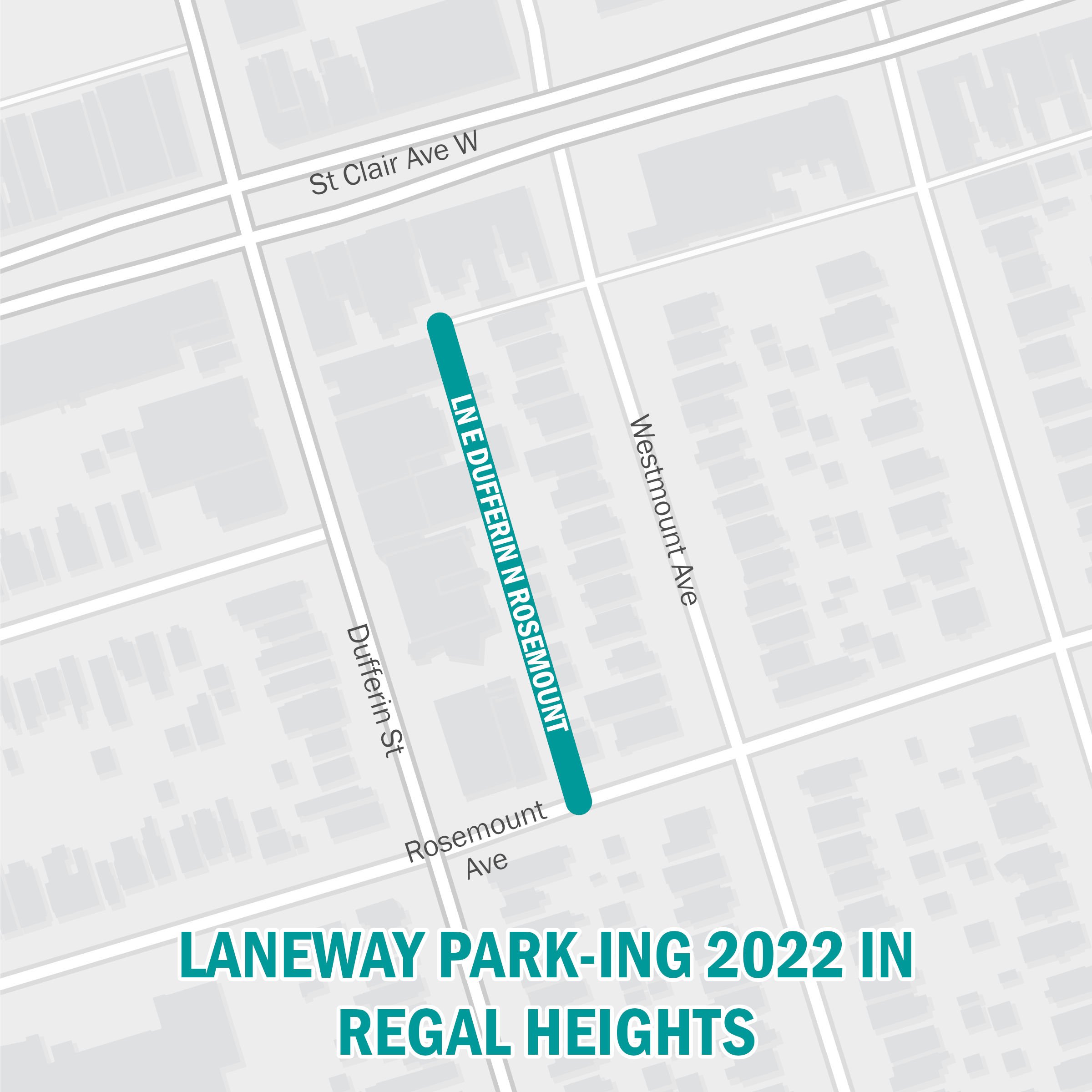
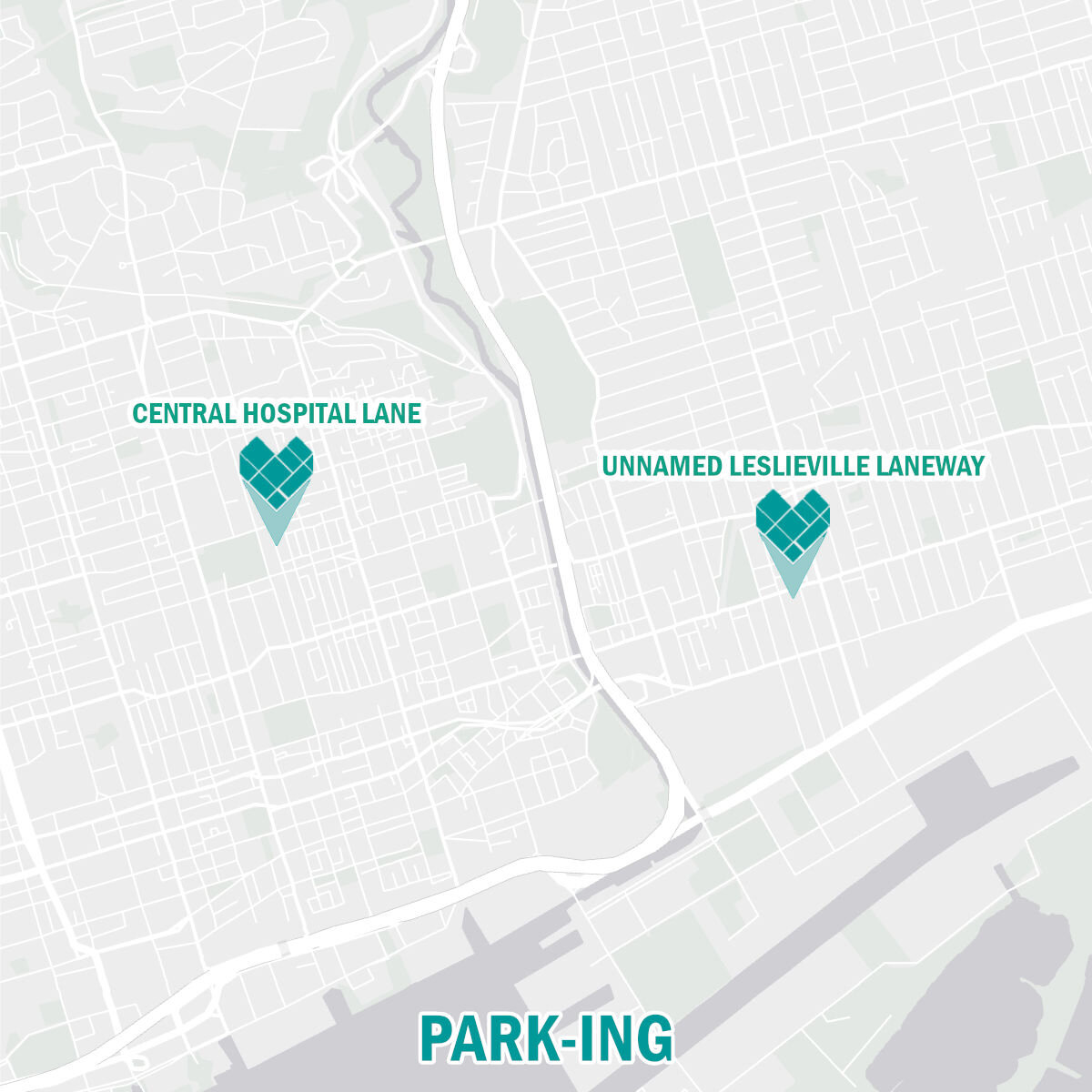

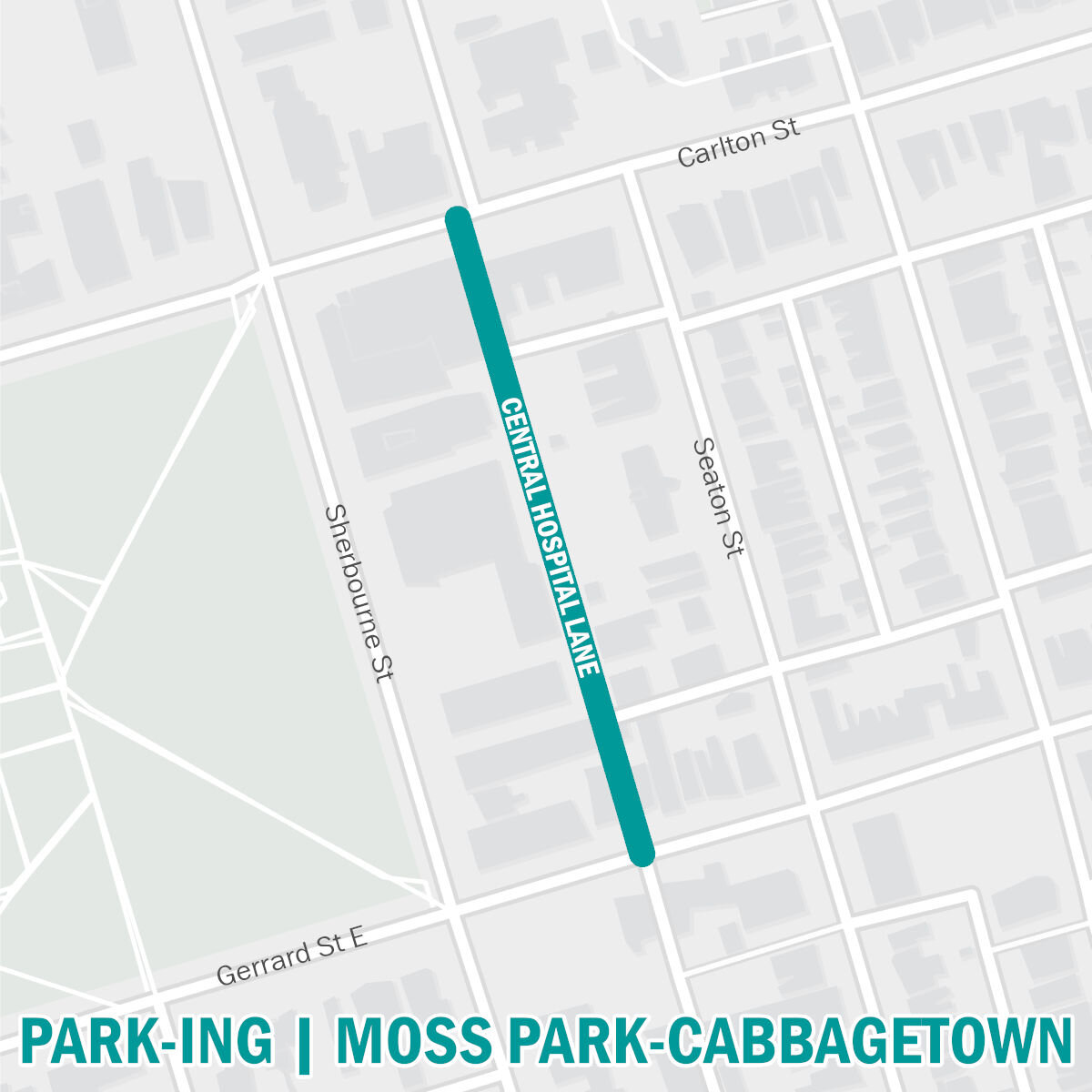

![DSC_1217[1]_Leslieville Park-ing.jpg](https://images.squarespace-cdn.com/content/v1/5420dd38e4b0968055cfdb19/1623269805452-ORLIEV72R0GHVQGS7P18/DSC_1217%5B1%5D_Leslieville+Park-ing.jpg)
![DSC_1229[1]_Leslieville Park-ing.jpg](https://images.squarespace-cdn.com/content/v1/5420dd38e4b0968055cfdb19/1623269805986-SROGDA84J7WZ97Q0I9Z1/DSC_1229%5B1%5D_Leslieville+Park-ing.jpg)
![DSC_1250[1]_Leslieville Park-ing.jpg](https://images.squarespace-cdn.com/content/v1/5420dd38e4b0968055cfdb19/1623269808444-8CWG8Y9MMYQYAPHUDWRR/DSC_1250%5B1%5D_Leslieville+Park-ing.jpg)
![DSC_1400[1]_CHL2.JPG](https://images.squarespace-cdn.com/content/v1/5420dd38e4b0968055cfdb19/1628003079381-UAYQ9U1PRC4E1BZXGTTS/DSC_1400%5B1%5D_CHL2.JPG)
![DSC_1414[1]_CHL2.JPG](https://images.squarespace-cdn.com/content/v1/5420dd38e4b0968055cfdb19/1628003059882-L9SGUCU2EUJ65SZP0OTX/DSC_1414%5B1%5D_CHL2.JPG)
![DSC_1419[1]_CHL2.JPG](https://images.squarespace-cdn.com/content/v1/5420dd38e4b0968055cfdb19/1628003133706-H1Q6NWPKVRCNRK6DZG2K/DSC_1419%5B1%5D_CHL2.JPG)
![IMG_3217[1].JPG](https://images.squarespace-cdn.com/content/v1/5420dd38e4b0968055cfdb19/1628003229528-IEKY5JJOESRO689TAREH/IMG_3217%5B1%5D.JPG)
